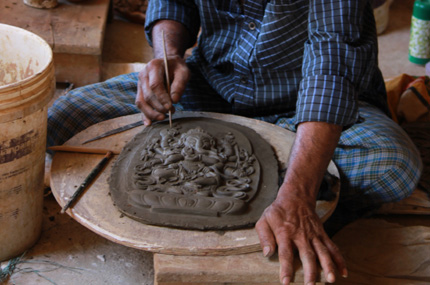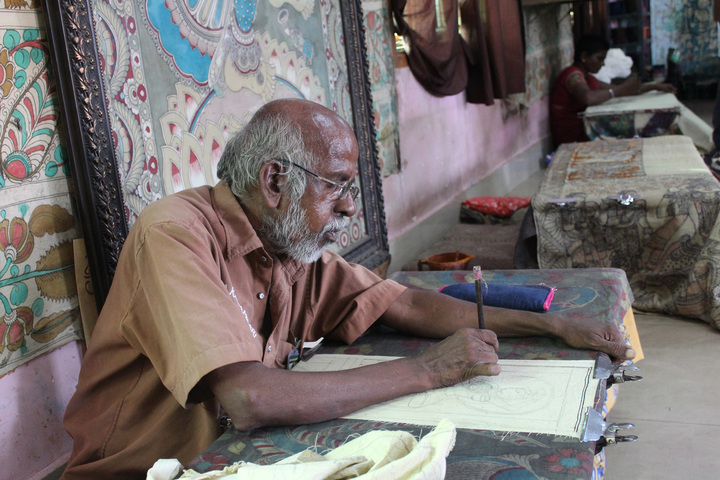Terracotta

Terracotta is a clay-like earthenware ceramic that can be either glazed or unglazed. India has a rich tradition of clay crafts throughout the country. It is a clay that when fired is porous, a characteristic that has contributed to its popularity around the world as the natural material choice for garden pots, domestic ornaments, festival décor, idols, containers and jewelry. It has also been extensively used in architectural work, from basic bricks to decorative tiles.
Terracotta is one of the oldest form of arts having its origin from around 1500 BC. Various figurines were unearthed from archaeological sites of the Indus Valley Civilization.
In India, artisans have learned different skills when it comes to Terracotta, to continue the legacy of their ancestors.
Metal Ware
Brass and Bronze handicrafts are one of the most common metal crafts as they have been present since almost 5000 years from now in the ancient past. Metal Crafts usually display intricate craftsmanship and include a diverse range of objects such as artefacts, idols and utility items.

Wooden Handicrafts

The making of wooden sculptures has been widely practiced even long before the age of ancient stone sculptural age. Woodcarving is the standard process in making wooden handicrafts and is a very time consuming process.
Kalamkari
It is an ancient style of hand painting done on a cotton or silk fabric that dates back to more than 3000 B.C. The name originates from the Persian words ‘kalam’ meaning ‘pen’ and ‘kari’ meaning ‘craftsmanship’. Only natural dyes are used in Kalamkari and it involves several tedious steps. Till today, many families in India continue to practice this art and it still serves as the prime source of income constituting their livelihoods.

